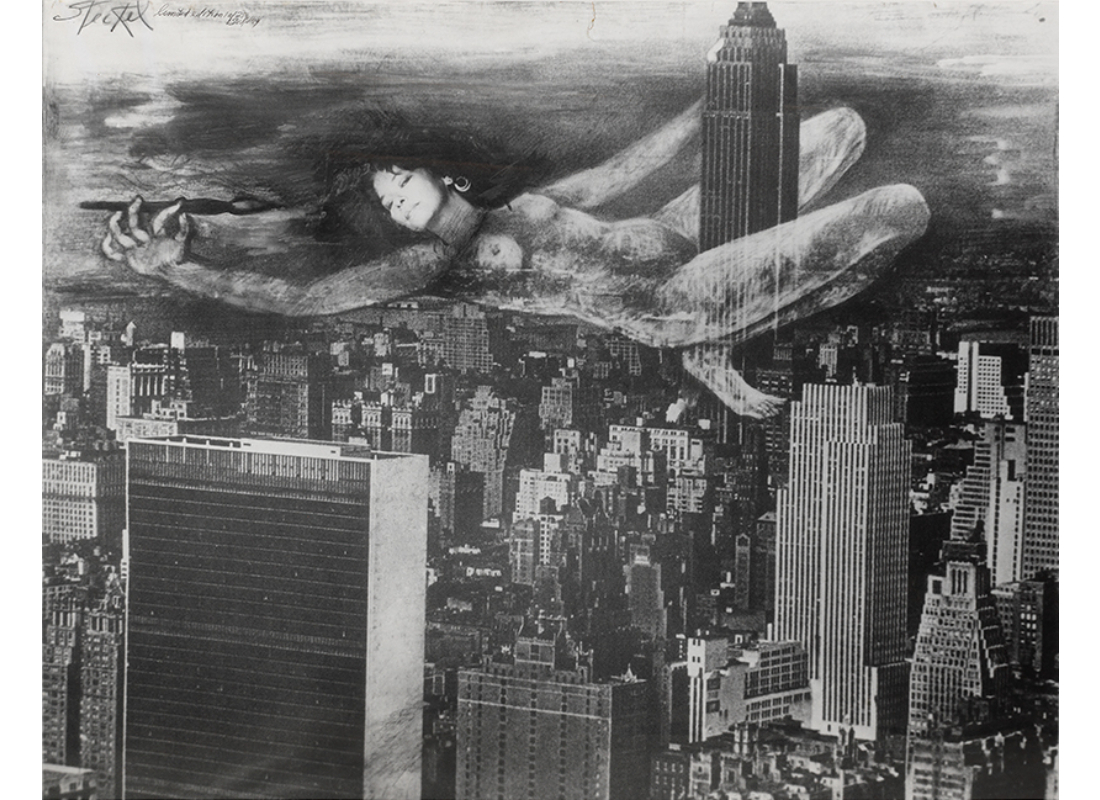
A History of Handwork | Giant Woman (Empire State)
Guest blogger Julia B Smith, class of 2019, wrote this post as part of her coursework for ARH 280: Photography and the Politics of Invisibility taught by Post-Doctoral Fellow Anna Lee. This course informed the current exhibition A History of Handwork: Photographs from the SCMA Collection on view on the Museum’s second floor until December 3, 2017.
Anita Steckel’s Giant Woman (Empire State) is part of the Giant Woman series, in which she depicted mammoth women overtaking five New York City landmarks, including the Chrysler Building and Coney Island. Here, an illustrated female body straddles the phallic Empire State building as if she is King Kong. Drawn on a photographic background of Midtown Manhattan, the shapely woman seems almost too big for the confines of the picture. In a 1969 version of the image, her face was hand-drawn like the rest of her body – it was not until 1973-74 that Steckel superimposed a photograph of her own face on each image in the series, eliminating the woman’s anonymity and, according to some scholars, exemplifying her growing feminist consciousness.
Although Steckel has integrated each layer of the photomontage, one can still distinguish between the photographic and the drawn due to the translucency of the woman’s legs and the disproportionate size of her hand. For the final version of the image, Steckel re-photographed the arrangement, flattening the layers into a single plane while maintaining traces of her presence as the creator of the image.
Gripping a paintbrush in one hand and the Empire State in the other, the woman dominates a space synonymous with male-centric corporations and class inequality. The paintbrush can be seen as symbolic of Steckel’s involvement in the feminist art movement of the 1970s, while her serene facial expression could connote her indifference or defiance towards patriarchal mores, including the notion that women do not belong in places of corporate male power.
Following controversy over whether her solo exhibition, “The Feminist Art of Sexual Politics,” should be closed on the grounds of obscenity, Steckel formed the group “Fight Censorship,” which united female artists advocating for equality and freedom of expression in the arts. Having been rejected from numerous shows on the grounds of pornography, Steckel and fellow members of Fight Censorship gained publicity through feminist and mainstream publications. Together they challenged the patriarchal conventions of female nudity as acceptable only if created under the male gaze. Steckel satirized this double standard by daring her subjects – now adorned with her own face – to take up space in places they were not typically welcome in 1973, and where, one might argue, they remain unwelcome today.